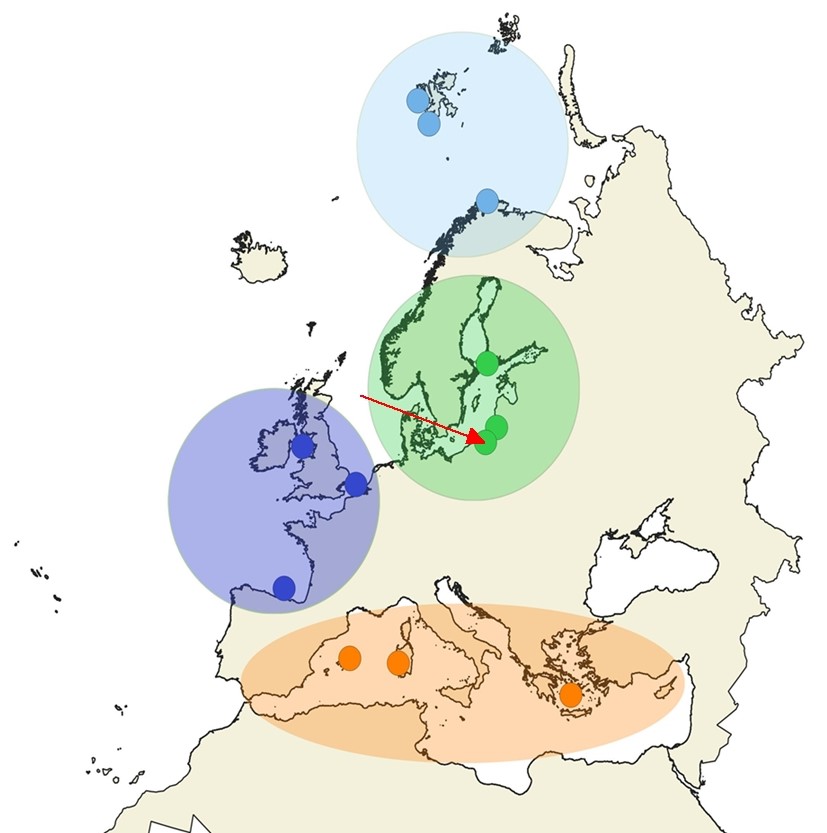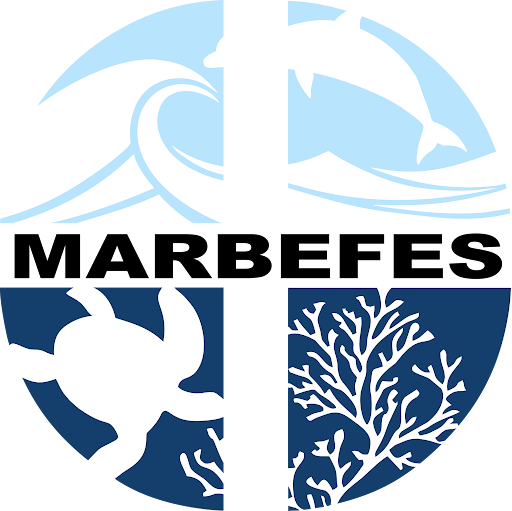overview of our BBT!
 |
Bay of Biscay BBT is a largely coastal area in northern Spain. Environmental Hydraulic Institute of the University of Cantabria is the leading partner in this BBT. Archipelago Sea BBT in Finland. It’s coastline is highly complex, with tens of thousands of tiny islands scattered across an area of over 5,000 square kilometres. Biodiversity and its possible future changes are the focus of the research of the ecologists from AboAkademi, who are the leading MARBEFES partner within Archipelago Sea BBT. Porsangerfjord BBT is located in the north of Norway. Major challenges is the decline in the fish stocks, due at least in part to deterioration of kelp beds and overfishing. The invasive red king crab Paralithoides camtschaticus has had a negative impact on the benthic fauna, but at the same time it provides revenue from commercial harvesting. Researchers from AkvaplanNiva are the leading partner within Porsangerfjord BBT. Sardinia BBT is located within the Gulf of Oristano and is full of scenic locations and important species such as noble pen shell (Pinna nobilis) and Neptune grass/seagrass (Posidonia oceanica). Institute of Anthropic Impacts and Sustainability in the Marine Environment is the leading partner in testing tools within Sardinia BBT.
|
|
Irish Sea is stretching from the Dublin and Dundalk Bays on the west, and Liverpool and Morecambe Bay on the east. This Broad Belt Transect is the biggest of all MARBEFES BBTs. To learn more about threats to biodiversity and ecosystem services within the Dublin Bay and other locations within the Irish Sea, researchers from University College Dublin, CEFAS, University of East Anglia, IECS Ltd., and University of Hull are developing and testing several valuation tools. Lithuanian Coast BBT is part of the coastal system of the South East Baltic Sea. The BBT includes Curonian Spit, a sand dune spit recognized as a UNESCO World Heritage Site, and Curonian Lagoon, the largest lagoon in Europe. Marine Research Institute of the Klaipeda University is involved in several tasks of MARBEFES, including calibrating and testing a numerical model to better understand biogeochemical/lower trophic level processes. The researchers will also sample sediments for the blue carbon assessment and collect and analyse data for the ecological value assessment. The northernmost BBTs - both located on Spitsbergen, the largest island in the Svalbard archipelago in Norway - North and South Spitsbergen. Researchers at the Institute of Oceanology Polish Academy of Sciences have been long studying the impacts of anthropogenic pressures on marine biodiversity in the Arctic and currently they are leading the research in North and South Spitsbergen BBTs. Next Broad Belt Transect is located in the North Sea. It’s quite a long transect (450 km), starting in Ostend and extending up to Dogger Bank. Flanders Marine Institute will collect and analyse the data needed for the ecological value assessment in the North Sea BBT. Combined with the information about the benefits of several species and habitats in the area, we’ll be able to provide better scientific advice to policymakers and environmental managers. Crete in Greece, where HCMR is testing several project tools to better understand marine biodiversity within Heraklion Gulf BBT. Bay of Gdańsk (Zatoka Gdańska) is a coastal inlet of the Baltic Sea located in northern Poland. Its shallow waters serve as an important habitat for various species of fish, birds, and marine mammals (including the iconic grey sea). Within MARBEFES, Institute of Oceanology PAS (IO PAN) is responsible for data collection and analysis in the Gulf of Gdańsk BBT. Thanks to common efforts, we’ll be able to determine which actions need to be taken to protect this wonderful area. |
|

